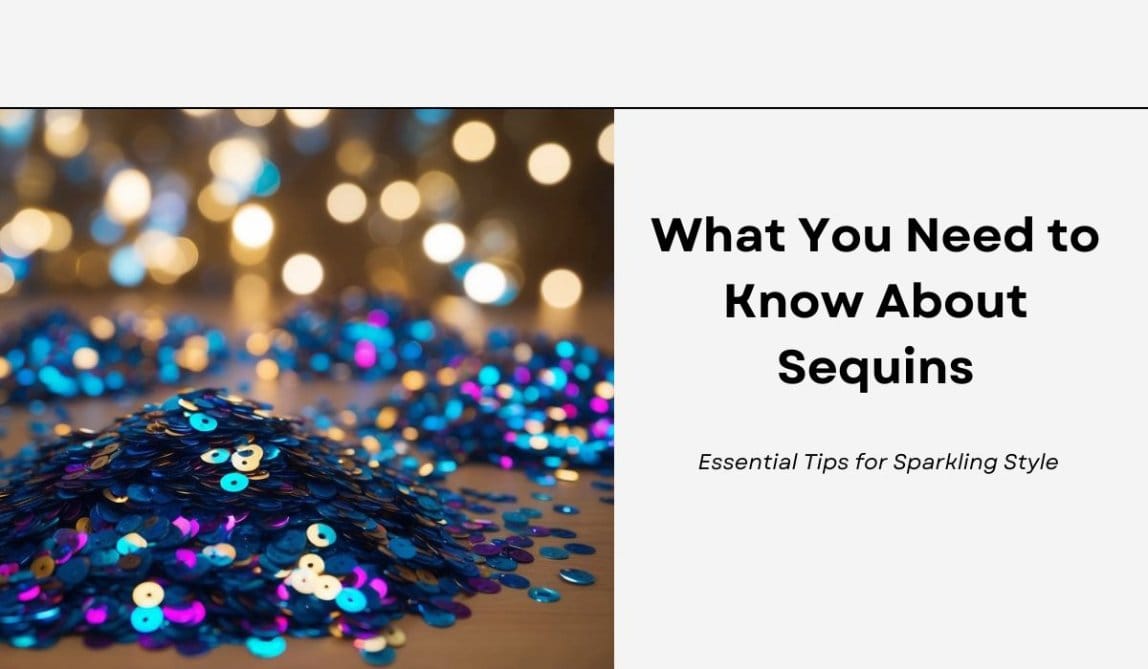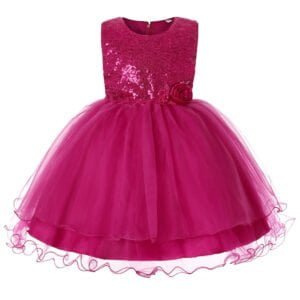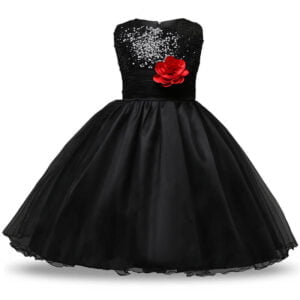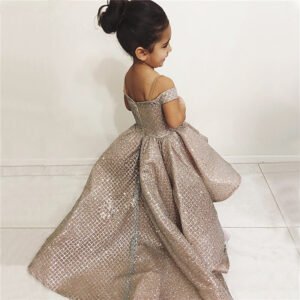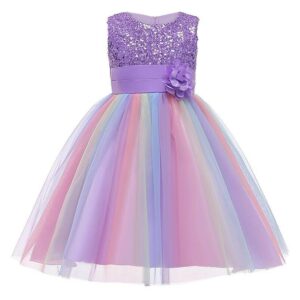From Care Instructions to DIYs: A Complete Guide to Sequined Clothing
Sequins have been dazzling the fashion world for decades. These tiny, shimmering discs add instant glamour to any outfit, transforming the ordinary into the extraordinary. Sequins are small, flat, reflective discs typically made of plastic or metal that are sewn onto fabric to create a sparkling effect. They come in various colours, sizes, and shapes, allowing for endless creative possibilities in fashion and design.
The allure of sequins lies in their ability to catch and reflect light, creating a captivating visual display. From elegant evening gowns to casual daywear, sequins have found their way into every corner of the fashion industry. They offer a versatile way to add texture, depth, and visual interest to garments and accessories.
While sequins are often associated with glamorous evening wear, they have evolved to become a staple in everyday fashion as well. Modern designers are incorporating sequins into casual pieces, blending sparkle with comfort for a fresh, contemporary look. Whether you’re looking to make a bold statement or add a subtle touch of shine, understanding the world of sequins can help you make informed fashion choices.
On This Page
Key Takeaways
- Sequins are versatile decorative elements that add sparkle and glamour to fashion.
- Different types of sequins offer varied effects, from subtle shine to bold, eye-catching glitter.
- Proper care and handling are essential to maintain the beauty of sequined garments.
Historical Significance of Sequins
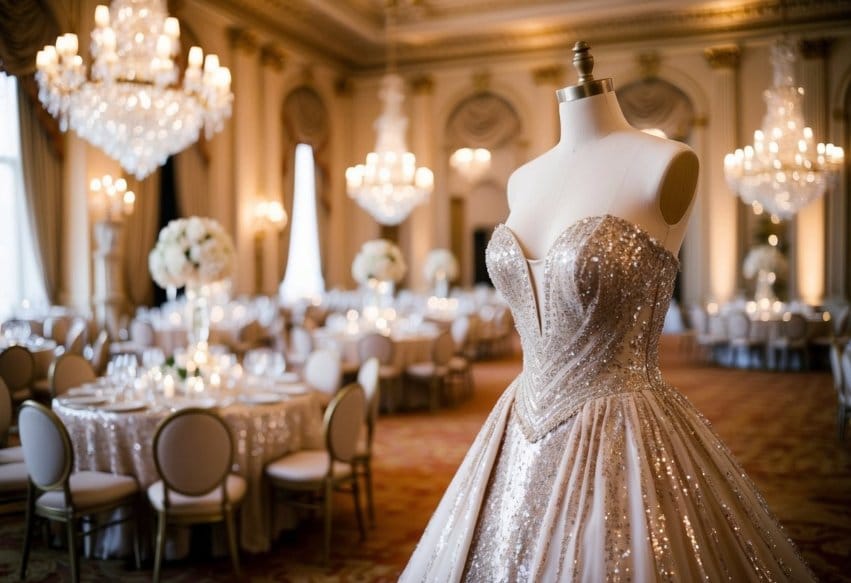
Sequins have a rich history that spans thousands of years. Their origins can be traced back to ancient Egypt, where gold sequin-like disks were found in King Tutankhamun’s tomb. These disks were believed to ensure financial stability in the afterlife.
The word ‘sequin’ comes from the Arabic ‘sikka’, meaning ‘coin’. This connection highlights the early association between sequins and wealth.
In the fashion industry, sequins gained popularity in the 1920s. They became a symbol of glamour and extravagance during the Jazz Age.
Sequins have evolved over time:
- 1930s: Gelatin-based sequins were invented
- 1940s: Plastic sequins emerged, making them more affordable
- 1960s-1970s: Disco era popularised sequins in mainstream fashion
Today, sequins remain a staple in the fashion world. They are used in:
- Evening wear
- Stage costumes
- Accessories
- Casual clothing
Sequins are seen as a “protest against gloom” in modern fashion. They add sparkle and joy to outfits, especially during festive seasons.
The fashion industry continues to innovate with sequins. New materials and application techniques keep this ancient embellishment relevant in contemporary design.
Types of Sequins
Sequins come in various shapes, sizes, and finishes to create different visual effects. Each type offers unique sparkle and texture for fashion and costume designs.
Flat Sequins
Flat sequins are the most common type. They have a smooth, disc-like shape that lies flat against fabric. These sequins reflect light evenly, creating a classic sparkle. Fashion designers often use flat sequins for evening wear and accessories.
Flat sequins come in many sizes. Smaller ones (3-4mm) give a subtle shimmer. Larger sequins (10mm or more) make bold statements. Colours range from metallic shades to pastels and neons.
Some flat sequins have special coatings. These can create effects like opalescence or colour-shifting. Matte finish flat sequins offer a more subdued look for daywear.
Recommended products
Baby girl sequin dress – Dark pink
Price range: £18.99 through £22.99Flower girl sequin tulle dress – Black
£18.99Girl high low sequin dress
£129.99Girl rainbow sequin dress – Purple
£20.99
Cupped Sequins
Cupped sequins have a concave shape. This curve catches and reflects light differently than flat sequins. The result is a more dynamic, three-dimensional sparkle.
Designers use cupped sequins to add depth and movement to garments. They work well for dance costumes and stage wear. The curved shape also helps them catch stage lights from various angles.
Cupped sequins come in different depths. Shallow cups give a subtle effect. Deeper cups create more dramatic light play. Some cupped sequins have faceted surfaces for extra sparkle.
Holographic Sequins
Holographic sequins offer the most eye-catching effect. They have a special coating that changes colour when viewed from different angles. This creates a rainbow-like shimmer as the wearer moves.
These sequins are popular for party wear and festival fashion. They add a futuristic touch to designs. Holographic sequins come in various base colours. This affects the range of colours they display.
Some holographic sequins have patterns or textures. These can create even more complex light effects. Designers often mix holographic sequins with other types for contrast.
Materials and Textures
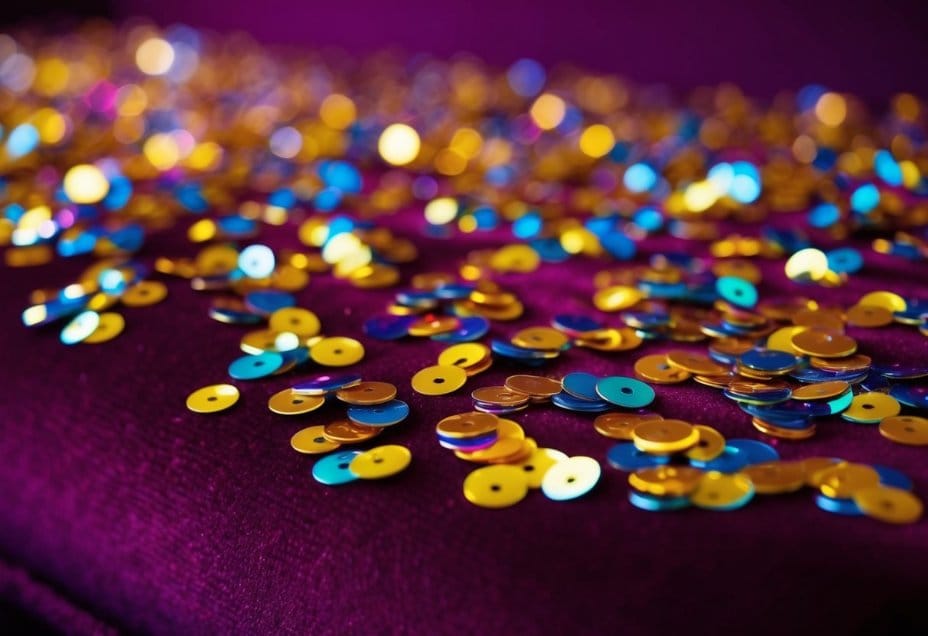
Sequins come in various materials and textures, each with unique properties. The fabric base and sequin composition affect the overall look and feel of sequined garments.
Sequin Fabrics
Sequin fabric typically consists of a base material with sequins attached. Common base fabrics include:
- Mesh: Lightweight and flexible
- Tulle: Delicate and airy
- Satin: Smooth and lustrous
Sequins themselves can be made from different materials:
- Plastic: Affordable and lightweight
- Metal: Durable with a luxurious shine
- Glass: Sparkly but fragile
The size and shape of sequins vary. Mini sequins measure under 4mm, while extra-large ones exceed 12mm. Shapes include round, oval, and flower-like designs.
Synthetic Fibres
Most modern sequin fabrics use synthetic fibres for durability and cost-effectiveness. Popular choices include:
- Polyester: Strong, wrinkle-resistant, and affordable
- Nylon: Lightweight and quick-drying
- Acetate: Soft with a silk-like feel
Vinyl sequins are common today, replacing earlier materials like gelatin. They resist melting and maintain their shape well.
Some high-end sequin garments may use natural fibres like silk or chiffon as a base. These offer a luxurious feel but require more careful handling.
Incorporating Sequins in Fashion
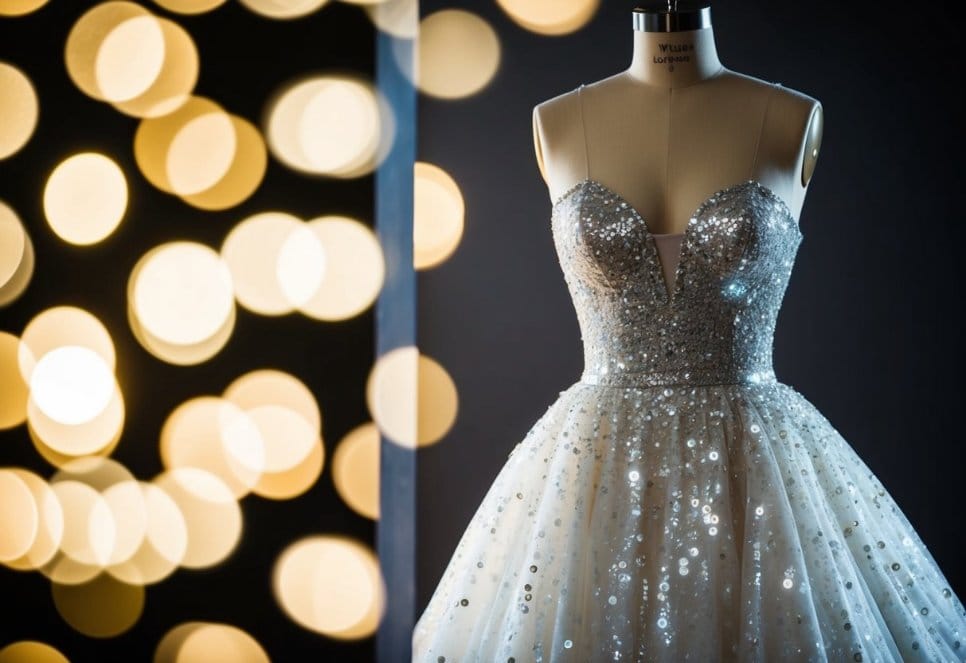
Sequins add sparkle and glamour to outfits. They can be used in various ways to create eye-catching looks for different occasions.
Evening Wear
Sequins are perfect for evening wear, adding a touch of elegance and sophistication. A sequinned dress is a classic choice for formal events or parties. Choose a full sequin gown for maximum impact or opt for a dress with sequin details for a more subtle look.
Sequin tops paired with sleek trousers or skirts create a stylish ensemble. For a trendy twist, try a sequin jumpsuit. It combines comfort with glitz and is perfect for dancing the night away.
Men can incorporate sequins too. A sequin blazer or jacket adds flair to a simple shirt and trouser combination. For a bold statement, wear a fully sequinned suit.
Remember to keep the rest of your outfit simple when wearing sequins. Let the sparkly piece be the focal point.
Accessories
Sequin accessories are an easy way to add glamour to any outfit. A sequin clutch or handbag instantly elevates a plain dress or casual jeans-and-top combo. Choose metallic tones for versatility or bright colours for a fun pop.
Sequin shoes, from pumps to trainers, can make a statement. Wear them with simple outfits to let them shine. Sequin scarves or belts add a touch of sparkle to winter coats or plain dresses.
For subtle sparkle, try sequin hair accessories like headbands or clips. They catch the light beautifully and add interest to any hairstyle.
Remember, a little goes a long way with sequin accessories. One or two pieces are usually enough to make an impact.
Essential Tools for Working with Sequins
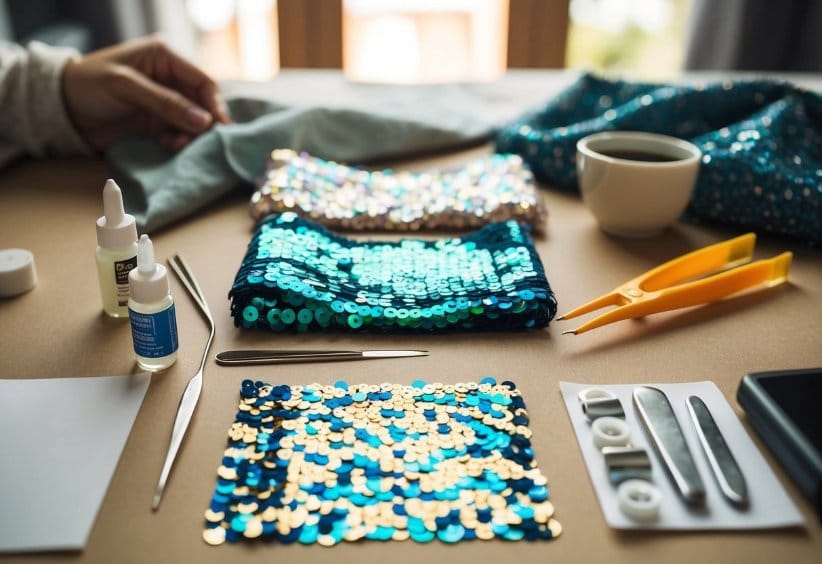
To work with sequins effectively, you’ll need some key tools. The right equipment makes sewing and handling sequins much easier.
Fabric Shears
Sharp fabric shears are crucial for cutting sequin fabric. Regular scissors won’t do the job properly. Look for shears with long, sharp blades made of high-quality steel.
Choose shears that feel comfortable in your hand. This is important as you may need to cut through layers of sequins and backing fabric.
Clean your shears after each use. Sequins can dull the blades quickly. Consider having a separate pair just for sequin work.
Sewing Sequins Essentials
A fine beading needle is essential for hand-sewing sequins. These needles are thin enough to pass through sequin holes without damaging them.
Strong thread is a must. Choose a thread that matches your sequins or fabric colour. Polyester thread works well as it’s durable and resistant to fraying.
If using a sewing machine, you’ll need a special sequin foot. This foot helps guide the sequins smoothly under the needle.
Consider getting a seam ripper for fixing mistakes. Be gentle when using it to avoid damaging the fabric or sequins.
Guidelines for Sewing Sequins
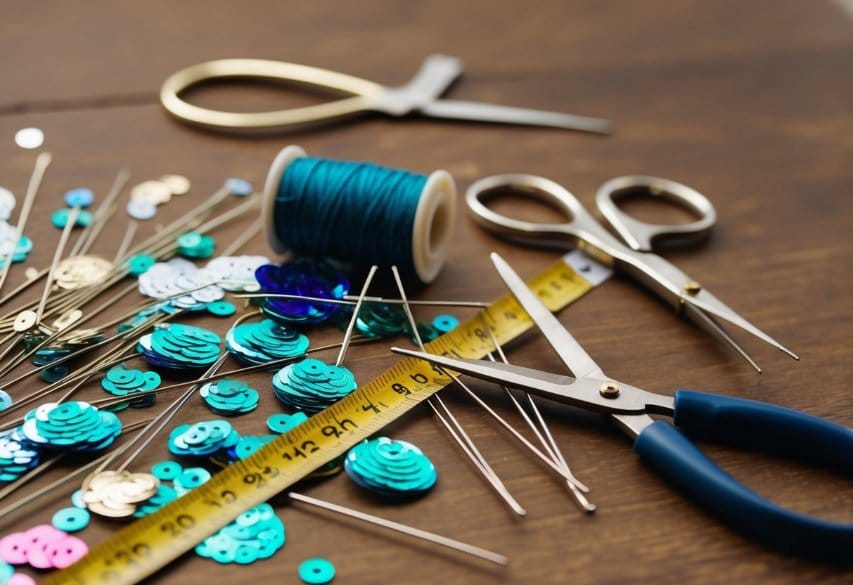
Sewing sequins requires special techniques to achieve a polished look. The right tools and methods make a big difference in the final result.
Seam Allowances
When working with sequin fabric, seam allowances need extra care. Use sharp scissors or a rotary cutter for clean cuts. Cut in the direction of the sequins to reduce resistance.
Trim sequins from seam allowances to prevent bulk. This helps the fabric lay flat when sewn. A 1.5 cm seam allowance works well for most sequin projects.
Press seams open after sewing. Use a press cloth to protect sequins from direct heat. Finger-press delicate areas to avoid damage.
Stitching Techniques
Choose the right needle and thread for sequin sewing. A size 70/10 or 80/12 needle works well. Use polyester thread for strength.
Hand-sewing sequins offers precision. The seed stitch is popular for attaching individual sequins. It creates a secure, even look.
For machine sewing, use a longer stitch length. This helps the needle move between sequins. A walking foot can help feed sequin fabric evenly.
Test stitches on a scrap piece first. Adjust tension as needed. Go slowly to avoid breaking needles on thick sequins.
Caring for Sequined Garments
Sequined clothing adds sparkle to any wardrobe, but it needs special care to stay shiny. These delicate pieces require gentle handling to prevent damage.
When washing sequined items, hand washing is best. Fill a sink with cool water and mild detergent. Gently swish the garment, avoiding rubbing which can loosen sequins. Rinse thoroughly in cool water until it runs clear.
Drying sequined clothes flat is crucial. Lay them on a towel away from direct sunlight or heat. This prevents warping or melting of the sequins.
For storage, keep sequined garments in a cool, dry place. Hang them inside out or wrap in tissue paper to prevent snagging. Using padded hangers helps maintain shape.
Steaming is the safest way to remove wrinkles from sequined clothing. Avoid ironing, as direct heat can damage the delicate embellishments.
When wearing sequined items, be mindful of rough surfaces. Sequins can catch and pull off easily. Apply perfume or hairspray before dressing to avoid staining.
With proper care, sequined garments can remain a dazzling part of your fashion collection for years to come.
DIY Projects with Sequins
Sequins add sparkle to any craft project. They’re easy to use and can transform ordinary items into dazzling creations.
One simple project is sequin-toed flats. Glue sequins to the toes of plain shoes for instant glamour. No sewing required!
For those handy with a needle and thread, try making stylish cushions adorned with sequins. Sew them in patterns or cover the entire surface for maximum shine.
Sequin animal ears make fun accessories. Attach sequins to headbands shaped like cat or bunny ears for a playful look.
During the holidays, craft a sequin tree. Cover a cone-shaped form with sequins for a glittering tabletop decoration.
For fashion lovers, try adding sequin elbow patches to jumpers. This updates old clothing and adds a touch of whimsy.
These projects suit crafters of all skill levels. With some creativity, sequins can enhance nearly any item. The possibilities are endless!
Frequently Asked Questions
Sequins have a rich history and diverse applications in fashion. They involve unique manufacturing processes, care requirements, cultural significance, and environmental considerations.
What is the history and origin of sequins?
Sequins date back to ancient civilisations. They were first made from metal coins and used as decorative elements on clothing.
In Egypt, sequins adorned the garments of pharaohs and nobility. The word “sequin” comes from the Arabic “sikka”, meaning coin.
How are sequins made and what materials are used?
Modern sequins are typically made from plastic or vinyl. Manufacturers use machines to cut thin sheets of material into small, shiny discs.
Some sequins have special finishes like holographic effects. These change colour when viewed from different angles.
In what ways are sequins incorporated into fashion design?
Designers use sequins in various ways. They can cover entire garments or add subtle accents.
Sequins often appear on evening wear and performance costumes. They’re also popular on accessories like bags and shoes.
What are the best practices for maintaining and cleaning sequined garments?
Caring for sequined items requires gentle handling. Turn the garment inside out before washing.
Hand washing or machine washing on a delicate cycle with cold water is best. Avoid harsh chemicals and heat, which can damage sequins.
How have sequins been used culturally and what do they represent in different contexts?
Sequins often symbolise glamour and celebration. In theatre and dance, they catch stage lights and add visual impact.
In some cultures, sequins are part of traditional dress. They can represent wealth, status, or spiritual significance.
What are the environmental impacts of sequins and are there sustainable alternatives?
Traditional plastic sequins can harm the environment. They don’t biodegrade and can release microplastics.
Some companies now produce biodegradable sequins. These are made from materials like cellulose or other plant-based substances.
Related Post: Fabric 101: Essential Guide to Textiles and Materials

